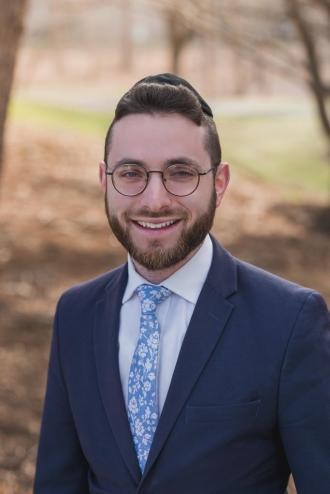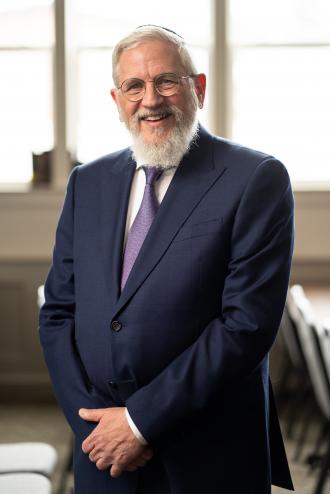Baltimore, MD - Nov. 16, 2017 - In recent years the level to which public safety has deteriorated is completely inexcusable and intolerable. Whether it is the periodic bursts of carjacking and break-ins targeting frum Jews, or such seemingly permanent conditions in other areas of Baltimore City. And sadly, as much as we are hearing a lot about crime these days, we are hearing almost nothing. Residents are talking about attacks and the media is reporting the high crime city-wide, but there is silence when it comes to solutions, and total failure in restoring public confidence that our streets will become safer.
Like “a broken clock being right twice a day,” some anti-crime programs work…for a while. But what about the rest of the time? In recent weeks, I have been thinking about, exploring, and studying old and new ideas for battling crime. And I believe we must rally around several approaches, particularly with regards to juvenile crime:
1. Involving the right people: We must ensure multidisciplinary action and accountability in fixing the problem, rather than assign blame or point fingers to a specific authority. We cannot just rely on Councilman Schleifer, the Mayor, or the Governor. We cannot just depend on the police. We cannot just blame judges, Social Services, or the prison system. Rather, under one crime-fighting umbrella we must unify all the agencies or divisions across the government spectrum who are, or who should be, involved in the varying stages of ensuring public safety. We must converge to create real interdisciplinary solutions that are effective for both the short- and long-term, including preventative activities as well as assigning relevant and appropriate punitive, corrective, or rehabilitation measures.
2. Having the right attitude: The second approach is to have no fear in making recommendations to reduce crime. We need leaders who will not worry about being politically correct, and instead be pro-active, bold, and unwavering in taking drastic action to protect our residents. It’s time to stop coddling criminals and protecting perpetrators, while the victims are rendered defenseless amid due to the need by politicians to demonstrate “compassion” toward those on the wrong side of prosperity. This is not about being conservative or liberal, Democrat or Republican, or black or white. This is about everyone, particularly the political leaders, finally standing up to protect the victims and innocent residents, instead of the law-breakers.
3. Implementing the right responses: Growing up poor is no excuse for robbing someone at gunpoint. Dropping out of school, being raised by a single mom, or having a learning disability should not be a defense for raping, carjacking, or breaking into a home. We must have resources and proper services to help those who need greater support towards securing a path of legitimate behavior, but we must also recognize the myriad youth and adults who come from dysfunctional homes or poverty-stricken upbringings but have not chosen a life of crime. It’s time to stop making excuses for the perpetrators, and to start rewarding Baltimore City youth who make the right choices in life.
Last year, I had the opportunity to spend several months working with the juvenile justice system, and I am determined that we must revamp it. I have seen first-hand how violent juveniles are essentially “given a lollipop” and sent back to the streets. We have to identify a juvenile by more than just a year of birth. Certain crimes (such as murder, armed robbery, armed carjacking, rape and home invasion) should not be addressed in juvenile court when committed by someone over age 16. A 17-year-old who chooses to carry and use an illegal gun, to distribute drugs as a business, or to assault and rape women should not be prosecuted as if he was a 12 year old who stole bubble gum from the grocery store.
And we must be one step ahead of youth crime. A bank has security in place to prevent robberies, and only if those fail are the police called. It should be no different in Baltimore City. Our families are our valuables, and there should be measures that guarantee as much protection as possible. If the enormous resources from the public, private and nonprofit sectors dedicated to helping the disadvantaged youth are not successful, is it because they are wasted at the bureaucratic level instead of reaching those for whom intended? Or perhaps the funds are directed towards ineffective and poor solutions and programs?
We must make sure that funds available for Baltimore City youth are properly used. We must create quality educational and extracurricular programs in and out of school; we must create quality neighborhood environments with green parks, skate parks, and athletic facilities and equipment; they need libraries and rec centers; and they need programs that help them develop skills for both careers and life – even starting at a young age. The Baltimore City youth that need our help aren’t shuffled by soccer moms between gymnastics and swimming, sports practice and art classes. They frequently aren’t showered with love, and don’t have many opportunities to develop their self-confidence. They struggle to survive in an environment that encourages illegal behavior and activities.
But we need to stop complaining about the problem and start fixing it. And that starts with a close examination of how did we get to this place, and how do we make drastic, long-lasting changes? We need to look at what is working and expand that, and what isn’t working and end those.
This includes closer looks at juvenile delinquent centers, legislation for criminal penalties for youth, and best options for rehabilitation programs. I plan to explore the state budget – how much money is Baltimore spending on public safety per resident, and how does that compare to other jurisdictions? I am exploring solutions initiated in other major urban areas that have worked to stem youth crime, and want to see what could work in Baltimore. Baltimore City has a new mayor and a new city council, who have been in office for less than a year but are starting to make important changes. While we give them a chance, next June we’ll have the opportunity to elect new, stronger leadership to the Maryland General Assembly for real change.
In the meantime, be vigilant, be cautious, and be safe. As Miriam Feldman, a ninth grader in Bnos Yisroel, is encouraging everyone, explore getting a security camera for the exterior of your home (and register it with Shomrim). Keep the exterior of your home well-lit, and have someone watch you going to and from your car on the dark mornings or evenings, when possible. Volunteer for community safety and watch groups, and donate to those organizations so they can supplement police activity to keep our neighborhoods safe. And instead of just complaining about the crime, actively stand with leaders who haven’t created this problem but will be part of the solution and put your safety before their political careers.
###
Former Maryland Attorney General Doug Gansler is a guest speaker at a Ravens Tailgate Party in support of Dalya Attar on Sunday, November 19 at 12:30 pm at the home of Anne Louise and Howard Perlow. For men and women. More info is available at www.dalyaattar.com/events















